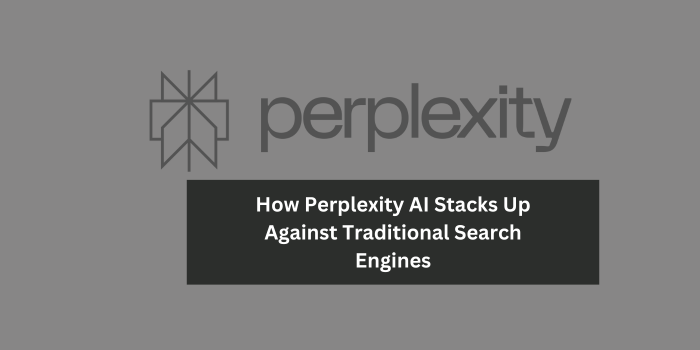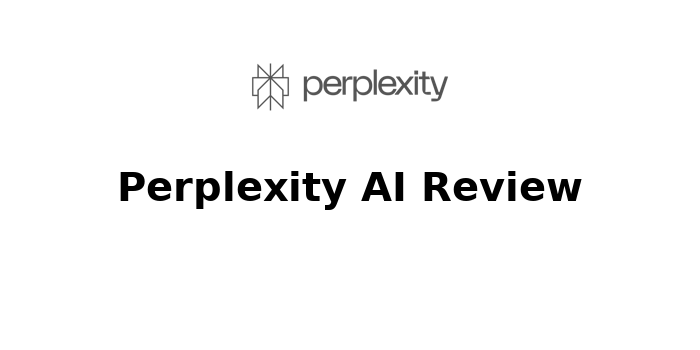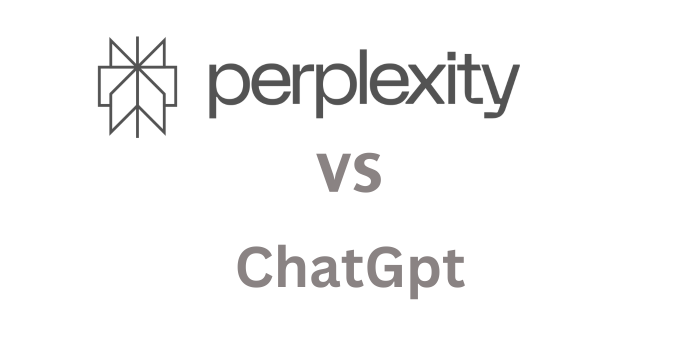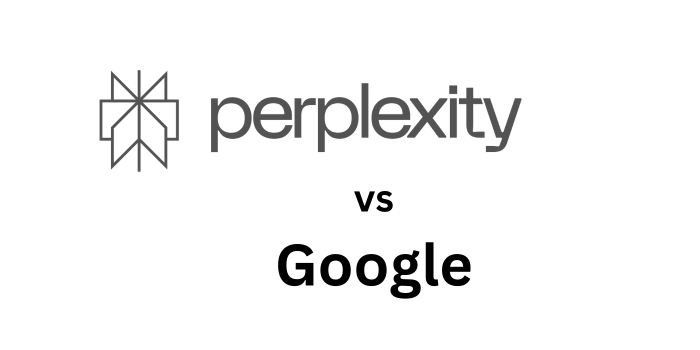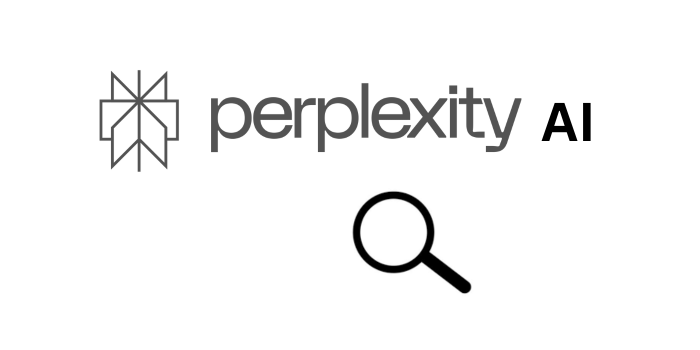How Perplexity AI Stacks Up Against Traditional Search Engines? For decades, traditional search engines like Google and Bing have dominated how we find information online. But the rise of AI-powered tools like Perplexity AI is challenging this status quo, offering a fundamentally different approach to information retrieval. This guide explores how Perplexity AI compares to traditional search engines, examining their strengths, weaknesses, and ideal use cases. Whether you’re a student, researcher, or casual user, understanding these differences will help you choose the right tool for your needs.
The Evolution of Search
Before diving into comparisons, let’s contextualize why AI-driven search tools like Perplexity exist:
- Information Overload: 4.5 billion web pages exist today, making manual research inefficient.
- Time Constraints: The average user spends <15 seconds on a search results page.
- AI Advancements: Large Language Models (LLMs) can now synthesize information with human-like comprehension.
Perplexity AI represents the next evolutionary step—a hybrid of search engine and research assistant.
Head-to-Head Comparison
1. User Experience
Traditional Search Engines (e.g., Google):
- Output: Lists of links, ads, and featured snippets.
- Process: Users must click through multiple sites to verify information.
- Time Investment: High (5-15 minutes per query).
Perplexity AI:
- Output: Concise, sourced answers in plain language.
- Process: Answers synthesized from multiple sources with citations.
- Time Investment: Low (10-30 seconds per query).
Example:
- Google Query: “Causes of the 2008 financial crisis” → 10+ links to articles, videos, and PDFs.
- Perplexity Query: Same question → A bullet-point summary citing The Fed, IMF reports, and academic papers.
Winner: Perplexity for speed; Google for exploratory research.
2. Information Quality & Depth
Traditional Search Engines:
- Strengths:
- Access to 130+ trillion indexed pages.
- Localized results (e.g., “restaurants near me”).
- Weaknesses:
- SEO spam dominates many results.
- No built-in fact-checking beyond domain authority.
Perplexity AI:
- Strengths:
- Answers prioritize .gov, .edu, and high-authority sites.
- Built-in citations enable instant verification.
- Weaknesses:
- Limited to ~20 sources per answer.
- Less effective for hyper-local queries.
Example:
- Medical Query: “Is intermittent fasting safe?”
- Google: Mix of blog posts, ads for diet plans, and Mayo Clinic link (often below ads).
- Perplexity: Summary of NIH studies + warnings for specific health conditions, with direct links.
Winner: Perplexity for accuracy; Google for breadth.
3. Real-Time vs. Static Knowledge
Traditional Search Engines:
- Indexing Delay: New information takes days/weeks to appear.
- Dependence on Publishers: Relies on websites to update content.
Perplexity AI:
- Real-Time Search: Pulls live data from the open web.
- Pro Version: Updates every 3-6 hours via partnerships with Bloomberg, YouTube, and Reddit.
Example:
- Breaking News Query: “Israel-Hamas ceasefire terms October 2023”
- Google: Outdated articles or speculation.
- Perplexity: Latest updates from AP News, Al Jazeera, and official statements.
Winner: Perplexity for real-time info; Google for historical context.
4. Customization & Control
Traditional Search Engines:
- Tools: Advanced search operators (e.g., “site:nytimes.com”), filters by date/file type.
- Personalization: Tailored results based on search history/location.
Perplexity AI:
- Focus Modes: Narrow results to Academic, YouTube, Reddit, or general web.
- Collections: Save and organize research threads.
- Copilot (Pro): AI-guided query refinement.
Example:
- Academic Research:
- Google Scholar: Requires manual filtering of papers.
- Perplexity (Academic Focus): Summarizes key findings from 3-5 recent studies.
Winner: Tie. Google offers granular controls; Perplexity simplifies specialized searches.
5. Learning Curve & Accessibility
Traditional Search Engines:
- Pros: Familiar interface; no account needed.
- Cons: Requires expertise to filter credible sources.
Perplexity AI:
- Pros: Intuitive Q&A format; ideal for beginners.
- Cons: Limited advanced features in free tier.
Example:
- High School Student:
- Google: May struggle to assess which links are trustworthy.
- Perplexity: Gets pre-vetted, cited answers instantly.
Winner: Perplexity for beginners; Google for power users.
When to Use Each Tool
Choose Perplexity AI If…
- You need quick, verified answers (e.g., “How does mRNA vaccine technology work?”).
- You’re researching complex topics requiring synthesis (e.g., “Economic impacts of AI regulation”).
- You want real-time data (e.g., stock prices, live event updates).
- You’re a student or researcher needing citations.
Choose Traditional Search Engines If…
- You need local results (e.g., “plumbers in Chicago”).
- You prefer to browse multiple perspectives (e.g., product reviews).
- You’re searching obscure/niche forums (e.g., vintage car repair).
- You want multimedia results (images, videos, maps).
The Hybrid Approach: Combining Both Tools
Savvy users often blend Perplexity and Google:
- Phase 1 (Perplexity): Get foundational knowledge and key sources.
- Example: “Explain quantum entanglement simply with sources.”
- Phase 2 (Google): Deep-dive into specific citations or find supplementary media.
- Example: Visit linked arXiv papers or YouTube explainers.
This strategy leverages Perplexity’s efficiency and Google’s vast index.
Ethical Considerations
1. Bias & Accuracy
- Perplexity: Inherits biases from training data and web sources. However, citations allow users to spot-check claims.
- Google: Susceptible to SEO manipulation and misinformation.
Mitigation Strategy: Cross-check critical info across both tools.
- Is Perplexity AI the Future of AI-Powered Search?
- Perplexity AI vs. Google Search: Which Provides Better Answers?
2. Privacy
- Perplexity: Requires an account for full features; anonymizes queries by default.
- Google: Tracks search history for ad targeting unless using incognito mode.
Takeaway: Neither is fully private, but Perplexity offers less personalized tracking.
The Future of Search
Industry trends suggest a convergence of AI and traditional search:
- Google’s AI Integration: Already testing “AI Overviews” in results.
- Perplexity’s Expansion: Adding image/video analysis and collaborative features.
- Specialized Tools: Expect domain-specific AI search engines (e.g., medical, legal).
While traditional engines won’t disappear, AI-driven tools like Perplexity will dominate time-sensitive, research-heavy, and complex queries.
Conclusion
Perplexity AI isn’t a Google killer—it’s a paradigm shift. For quick, accurate answers with citations, it outperforms traditional search engines. However, Google remains superior for local searches, multimedia, and broad exploration. The wisest approach is to use Perplexity for efficiency and Google for comprehensiveness, adapting your tools to the task at hand. As AI evolves, this hybrid strategy will likely become the new standard for effective information retrieval.
Final Verdict:
- Perplexity AI: Best for research, learning, and real-time data.
- Traditional Search: Best for local services, multimedia, and open-ended browsing.
